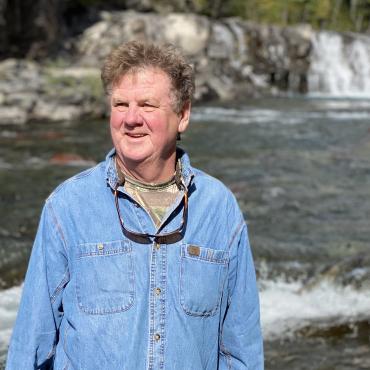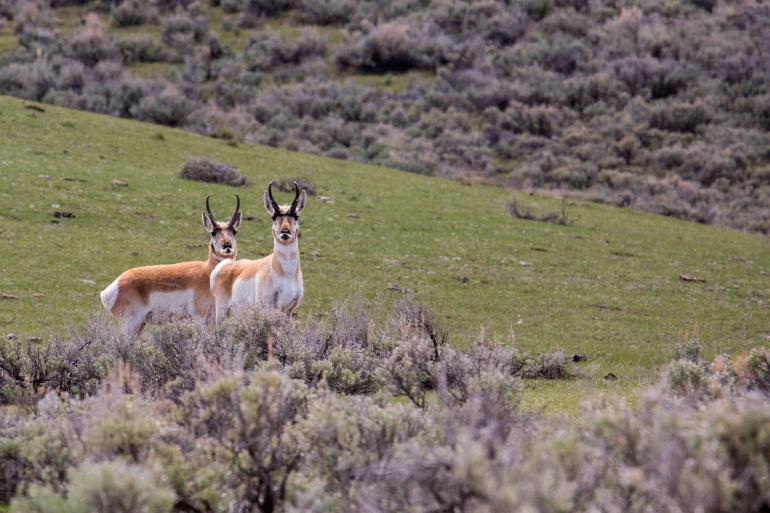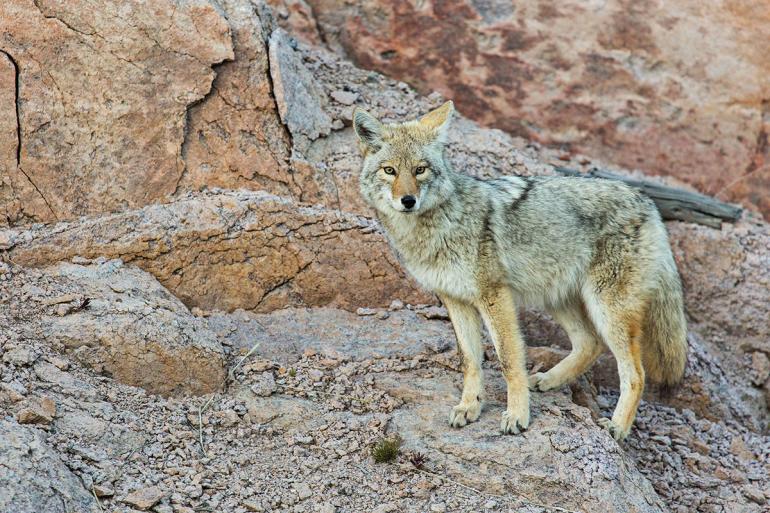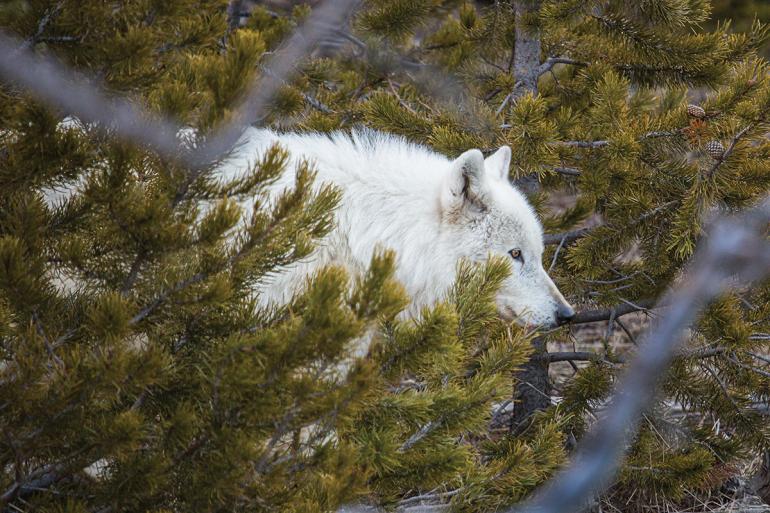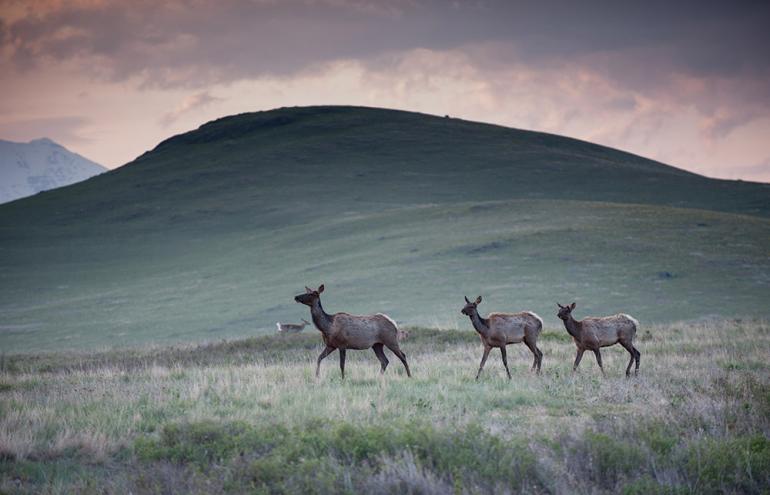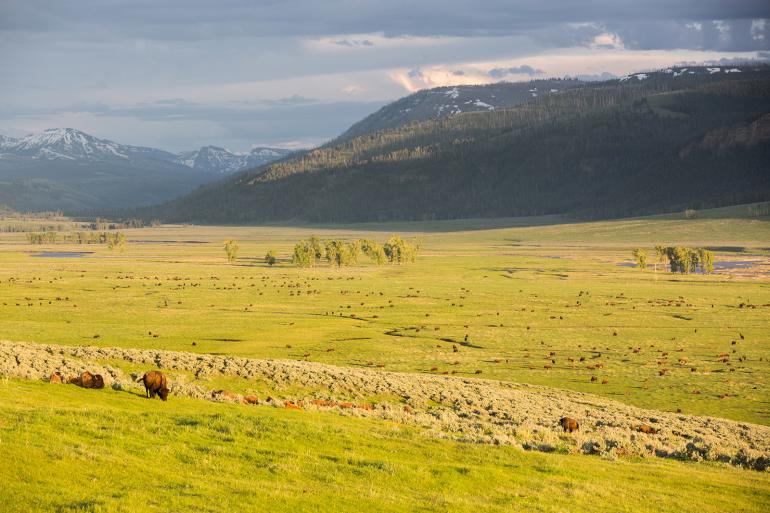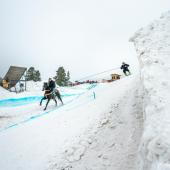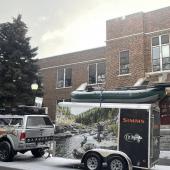Untamed & Wide Open
The Lamar Valley in spring.
The road from Gardiner through Yellowstone Park’s Lamar Valley, stretching east to Silver Gate and Cooke City, provides one of the most iconic wildlife viewing experiences in North America—if not the entire world. In April and May, winter seems to endlessly cling to the landscape. Frigid, gale-force winds blow snow across the sagebrush steppe and over the Lamar River, whipping the surface into a frothy, muddy, latte brown.
But seemingly overnight, the wind eases and warm rays of sunshine foster new sprigs of grass. Spring arrives, but like rust, winter never sleeps. Author Thomas McNamee explains the final toll of winter in his seminal book, The Return of the Wolf to Yellowstone.
“In mid-valley an emaciated old bull (elk) lies on his side with his nose skidded into the mud, heaving his last few breaths in heavy mud-bubbles. Come night and morning, his substance will enter that of coyote, raven, magpie, grizzly, and the legions of microscopic diners on the dead.”
The death of elk and bison that struggled with the harsh winter—and lost—now bring sustenance to the living. Gray wolves, with their hungry pups, spar with the skinny grizzly mama bear and her yearlings over winter-kill. Other animals consume carcass by-products, such as microscopic fungal spores. In this busy neighborhood, thousands of appetites interact until the carcass melts away and everybody moves on.
By mid-May, the valley welcomes newborn elk and bison calves. This spring, alpha female wolf 907 lay at her den with seven pups. A mile east of her, a pair of grizzlies mated as a golden eagle guarded her clutch of eggs.
These dramatic scenes of the food chain are a spectacle for wildlife enthusiasts driving across the valley floor.
Wildlife Wonderment
Elk, bison, deer, and pronghorn thrive in the grasslands. In fact, some of the largest wild herds of bison and elk in North America are found here. The abundance of ungulates draws attention from large predators, including grizzly bears and wolves. Coyotes are also common, and an occasional bobcat, cougar, or red fox are sighted.
The reintroduction of the wolf to Yellowstone in 1995 restored an important element of ecological integrity to the Greater Yellowstone Ecosystem. This region now contains every large wild mammal—predator and prey—that inhabited it when Europeans first arrived in North America, though not in the same numbers or distribution. But about the closest one can get to those pre-settlement days is the Lamar Valley.
It is often said that the Lamar Valley is known as America’s Serengeti. It feels wild. Mostly because it is a place where nature exists with little human influence. The best access points for driving through the Lamar are the north entrance at Gardiner and the northeast entrance just west of Cooke City.
Sometimes, the best course of action for wildlife watching in the Lamar Valley is to set up in a beautiful spot and just wait. You never know what could walk by at any moment.
What to Know Before You Go
• There is an entrance fee to Yellowstone Park. You can pay either $35 per vehicle (good for seven days) or invest in the America The Beautiful Pass for $80, granting you unlimited access to all of America’s national parks for one year.
• The road stretch through the Lamar Valley is roughly 13 miles.
• The road is open year-round and is a hotspot for wildlife photographers.
• For wildlife viewing, it’s best to get to the Lamar Valley at dawn or dusk when animals are most active.
• Do not approach or feed animals. Respect the ones you do see by keeping your distance. A good rule of thumb is at least 100 yards from wolves and bears, and at least 25 yards from bison, moose, bighorn sheep, elk, deer, and pronghorn. Suffice it to say that probably works for skunks, too.
• Always carry bear spray and make sure it’s on your belt or in a holster where it’s readily available.
• Pack a pair of binoculars, especially if you want to see wolves or bears. Other great optics to include, if you have the means, are a spotting scope with a tripod and a telephoto lens for your camera. Phone-scope mounts are great, too, allowing you to get up close and personal with wildlife while keeping a safe and respectable distance.
Campgrounds & Lodging
There are two small campgrounds offering quick access to the Lamar Valley. Slough Creek and Pebble Creek are ideal if you’re going to be out early and late. Slough Creek offers 16 sites along its namesake creek north of the Lamar River. Pebble Creek is closer to the Park’s northeast entrance, nestled under the dramatic backdrop of the Absaroka Mountains, with 27 sites available. Reservations can be made for both campgrounds online. Check early, as they often fill up quick.
There are also hotels and lodges in Silver Gate and Cooke City, along with fuel, restaurants, and bars. If coming from Billings or Red Lodge, access the Lamar via the stunning Beartooth Pass. For those coming from Cody, WY, enjoy the stunning scenery along the Chief Joseph Highway.

